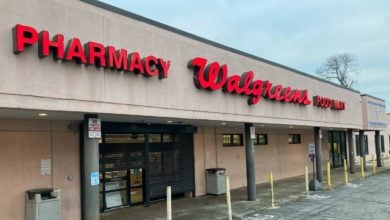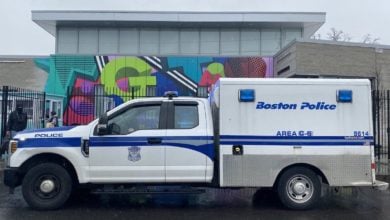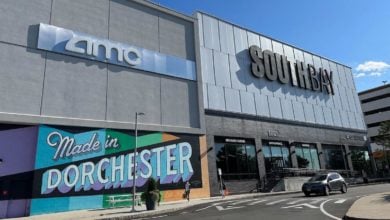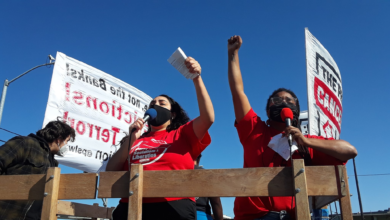On Dec. 9 a public meeting took place at the Harriet Tubman House in Boston’s South End neighborhood to present a plan to sell the Tubman House to New Boston Ventures, a private developer. NBV intends to demolish the historic community hub for Black and working class Bostonians, and construct a mixed-used development — which would include 66 luxury condos — in its stead. Such public meetings must be held before a proposed development project can be approved by the city, but they are a formality, as community members have no formal decision-making power.
The Harriet Tubman House has been a fixture in Black Boston since 1908 and has been at its current location since 1975. In 1904, six Black women — including one of Tubman’s friends Julia O. Henson — rented the first Harriet Tubman House at 37 Holyoke Street in the South End to provide shelter to other Black women who had just moved from the South. Since then, the Tubman House has served as a place of refuge for its community by offering services such as job training programs, adult education, support groups and child care. The Harriet Tubman House housed six nonprofits, four of which have since been forced to relocate.
Members of I Am Harriet, a community coalition that is fighting to stop the sale, disrupted the meeting with chants, songs, posters and a banner for over 90 minutes. Despite the demonstration and an online petition with 55,000 signatures opposing the sale, the Boston Planning & Development Agency Board plans to vote on whether to move forward with the process to sell the Harriet Tubman House at their December 12 meeting. The agenda point concerning the Tubman House is not open to public testimony.
Dividing the community with a false choice
The Harriet Tubman House is owned by United South End Settlements, a non-profit with a long history in the South End. USES claims that it must sell the Tubman House in order to keep its doors open in the coming years. USES has used this claim to manufacture significant support for the sale from their staff, as well as young people and parents who have utilized USES programming. Because the December 9 public meeting was not publicized by the city, the vast majority of attendees were either I Am Harriet supporters or USES supporters (and thus supporters of the sale). USES supporters heavily outnumbered I Am Harriet at the meeting.
However, some community members challenge USES’ narrative. Long time South End resident and beneficiary of Harriet Tubman House programs, Jared Katsiane told Liberation News:
“We have enough luxury condos throughout the city, not just the South End, and gentrification is never the answer to building community. … United South End Settlements in its recent iteration, the last few years, has proven itself irresponsible and not a responsible steward of the building. They’ve spent down their endowment, they’ve laid people off while they’ve given raises to the highest administrators. They’ve eliminated the programs for seniors … and to take that away was just cruel and heartless.”
According to the I Am Harriet coalition, communities of color, non-profits, developers of color and churches were left out of the process to decide what should or could be done with the Harriet Tubman House. Members of the coalition said the police were called when they attended USES meetings to find out more information.
The proposed sale is taking place within the context of a rapidly gentrifying South End. In 1980, even after the damage of Urban Renewal, 39 percent of South End residents were Black. As of 2015, that figure had decreased to 12 percent. While USES and New Boston Ventures boast that the proposed development project will generously contain 17 percent “affordable” housing, the cheapest of those units, a 745 sq ft 1-bedroom, would hit the market for $186,400. Considering that the median net worth of Black families in Boston is $8, it is clear that this project will only accelerate the gentrification of the South End. If luxury developments continue to sprout up in the South End, there may no longer be a working class community for non-profits like USES to serve.
After the demonstration on December 9, I Am Harriet member Emily Origias explained, “as long as the Harriet Tubman House is here, it’s not that it makes all the gentrification that has already happened go away … but it is an icon for every single person of color who comes through here, that they can belong here, and that this space is for them. … And so, if you take away the Harriet Tubman House, you take away that last thing, that people have to know that they belong and that they deserve to be here.”
‘We Are Harriet, NOT FOR SALE!’
During the demonstration, members of I Am Harriet held a banner that read “Defend the Tubman House! #PeopleB4Profits” and shouted chants, including “We are Harriet, not for sale, ” “Condos for who?” and “How do you spell racist? BPDA!” The coalition is urging the Boston Planning & Development Agency to keep the zoning restriction that designates the land that the Tubman House sits on for “office/recreational” use. If the restriction is maintained, no private developer can legally construct luxury housing on that land.
The I Am Harriet Coalition has listed its demands as the following:
- Keep the urban renewal use restriction as the Harriet Tubman House (566 Columbus Avenue)
- Stop the sale to a market-rate luxury condo developer
- Preserve the Harriet Tubman House at 566 Columbus Avenue as a social service agency as intended
- Nonprofit and Community ownership of 566 Columbus Avenue
The I Am Harriet coalition is asking its community and supporters to submit comments urging the BPDA to delay its 12/12 vote and stop the sale of the Harriet Tubman House to New Boston Ventures.





